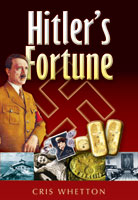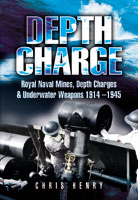Badges of the Regular Infantry, 1914–1918 (Hardback)
Imprint: Pen & Sword Military
Pages: 352
Illustrations: 250 colour & 100 black and white illustrations
ISBN: 9781526758026
Published: 29th October 2021
(click here for international delivery rates)
Order within the next 10 hours, 57 minutes to get your order processed the next working day!
Need a currency converter? Check XE.com for live rates
| Other formats available - Buy the Hardback and get the eBook for £1.99! | Price |
|---|---|
| Badges of the Regular Infantry,… ePub (41.5 MB) Add to Basket | £6.99 |
Badges of the Regular Infantry, 1914-1918 is based on over thirty years research in museums, archives and collections. It is an exhaustive study of the development of the battalion, brigade and divisional signs of the twelve divisions that formed the regular army during the Great War. It also looks at the badges of those battalions left behind to guard the Empire.
While the divisional signs are well known, there has been no authoritative work on the signs worn by the infantry battalions. The book will illustrate the cap and shoulder titles used, as well as cloth signs worn to provide easy recognition in the trenches. Each regular and reserve battalion of a regiment has a listing, which provides a brief history of the unit and detailed information on the badges worn. It is profusely illustrated and contains much information, like why a shape or colour was chosen, when it was adopted, what size it was, whether it was worn on a helmet, what colour the helmet was and even what colours were used on horse transport; the majority of this rich and detailed information has never been published before. What helps make the information accurate and authoritative is that much of it comes from an archive created at the time and from personal correspondence with hundreds of veterans in the 1980s, many of whom still had their badges and often had razor-sharp recollections about wearing them. The book also provides some comments from these veterans. Using the illustrations will allow many of those unidentified photos in family albums to come to life.
This is a handsome book which follows the order of precedence of the British regular line infantry, and section by regimental section, provides notes, by battalion, of the distinctive, unifying insignia which were worn. Each section is headed by the associated metal regimental capbadge but the book focuses on the distinguishing regimental, battalion and, in some cases, formation cloth badges which they wore. These are mostly illustrated in full colour, frequently on sealed pattern cards, and are accompanied by contemporary black and white images of the badges being worn on uniform. The source of the individual badges illustrated is not given but it is clear from the extensive bibliography, list of sources and vast number of acknowledgments that in forty years the author has left few stones unturned for information. The core of the book is drawn from the unrivalled collection and associated paperwork held by the Imperial War Museum which they gathered direct from units during and immediately after the First World War. Doubtless regimental specialists may be aware of additional information about their own specific battalions but I am confident that there will be something new for the vast majority of readers. It is most highly recommended and it is to be hoped that the author will soon tackle the complexities of Territorial Infantry!
Military Historical Society
Books such as this covering specifics have a mixed appeal. For me it is a subject in which I have an interest having collected many cap badges from this period through to the present day. The book enables me to check for authenticity as well as checking I have my details correct. As a modeller it helps me to locate badges correctly and also know when not to add them and why. The author has managed to take a topic that can be a little dry and add some life to it making this an interesting title.
Armorama
Read the full review here
"...highly recommended for collectors, curators, re-enactors, historians of uniforms, and those interested in trying to identify soldiers in photographs."
ARGunners.com
Read the review here
"Deserves to be highly recommended."
Cher Ami, GWSIG Newsletter – International Plastic Modellers Society (UK) – March 2021
What a cracker, and a fitting companion to the author's 'The Badges of Kitchener's Army'. Beautifully illustrated this will become a standard and essential reference work for many. I have had the Kitchener's Army volume at arm's length since it was published in 2018 and this new volume will sit alongside it. Absolutely superb!
Paul Nixon
I know it may be a tall order, but I hope there is a Territorial Force volume in the offing as well. Well done, Dave!
5 stars
Read the full review here
Naturally the book by its nature requires illustration, but the sheer volume of pictures is to be applauded, ranging from examples of the insignia to photographs of soldiers displaying the patches on their uniforms.
WW1 Geek
Overall this can only be described as another valuable addition to the bookshelves of the First World War anorak.
Read the full review here
For any researcher of men who served in the First World War, or indeed anyone who is interested in the regular infantry of 1914-1918, finding out about the badges of Regiments is so important. Coming across an old photograph of a soldier who served, and linking that soldier to a particular Regiment is important on various levels, whether that is making a link to the Regiment itself, or indeed helping to identify the particular individual. This important book by David Bilton provides an instant resource to assist with this process...
Jon Sandison
Overall , this is a very accessible book which will further assist many to understand the key badges and identification of the British Army, and as a result open many new doors in both personal and wider research. As well as being of great assistance to researchers, it will be of help in equal measure to those seeking to find out more about family members.
Not just something to read, this I believe will be a go-to reference for those trying to identify badges on old family photographs, collectors identifying what they have or might want, re-enactors who want to get their uniforms just right, historians and of course modellers who want to paint figure for specific units. There will always be gaps in knowledge, for example by troops removing all badges or ID when taking part in a raid or otherwise not wishing to let the enemy know who was where. The sheer volume of work that has gone into this is obvious from the outset. It is a complex subject but this is really a first class reference, one that I think will soon become a standard reference for anyone interested in WW1.
Military Model Scene
Read the full review here
A superb memoir of the military badges in use in the regular army during WW1.
Books Monthly
Very good and certainly one for the shelf.
The Long, Long Trail
Read the full review here
Between them these volumes are the culmination of masses of man hours spent on researching these formation badges. By collating and presenting this information the author has done great service to the military history community and the general public who are interested in the British army of the Great War. The high standard of his work should be acknowledged, and he should be thanked for producing these volumes which are of great benefit to researchers and others interested in the insignia worn during the Great War by the British Army.
Dr Stuart C Blank, Military Archive Research
As featured on Army Rumour Service
ARRSE (Army Rumour Service)
This sumptuous book, which follows on from an earlier volume covering the badges worn by Kitchener's Army, is a tour de force. It serves as a definitive historical record but will also be of interest to re-enactors, collectors, family historians and those with a general interest in the Great War. The author is to be congratulated in producing such an informative book. Choosing the four hundred illustrations was clearly a labour of love - aside from the written content, it is a pleasure leafing through pages which are splashed with colour and personality.
Phil Curme
Recommended.
Read the full review here
This book is like one of those cool reference books you come across where you know you’re going to find exactly what you need and more. This book as the title says will inform you of all the badges, cloth signs, cap crests and insignias you going to get in every infantry battalion and brigade in the British Army during the Great War. This book is going to be of huge interest to a number of different readers, those who have a love of the infantry during the Great War and I thought those that are into family research and want to identify uniforms from old photographs. The number of photos in the book is huge and really do help make this book a big success. In my opinion, this is a great book for reference and I would most definitely recommend it to others.
UK Historian
Read the full review here
Featured in
Great War IPMS, Great War SIG newsletter – October 2021
About David Bilton
David Bilton is a retired teacher who spends his time looking after his family, working as a university lecturer and researching the Great War; an interest ignited by his paternal grandfather’s refusal to talk about his experiences at Gallipoli and on the Western Front. He is a prolific author whose books includes works on the British and German Army, the Home Front and Great War badges; this is volume three of the badges of the British Army in the Great War. Since he started writing he has contributed to television and radio programmes, appeared on Country File and Look North, and given talks on his work.
Badges of the Territorial Infantry, 1914–1918 (Hardback)
The Territorial Force (TF) is often ignored by students of the Great War. However, these ‘Saturday Night Soldiers’ played a vital and underestimated part in the Allied victory. There were equal numbers of New Army and TF divisions, who were the first called to aid the regular troops in 1914. This book aims to re-dress this oversight. Badges of the Territorial Infantry, 1914-1918 is based on over thirty years of research in museums, archives and collections. It is an exhaustive study of the development of the battalion, brigade and divisional signs of the TF units that served overseas during…
By David BiltonClick here to buy both titles for £50.00






















